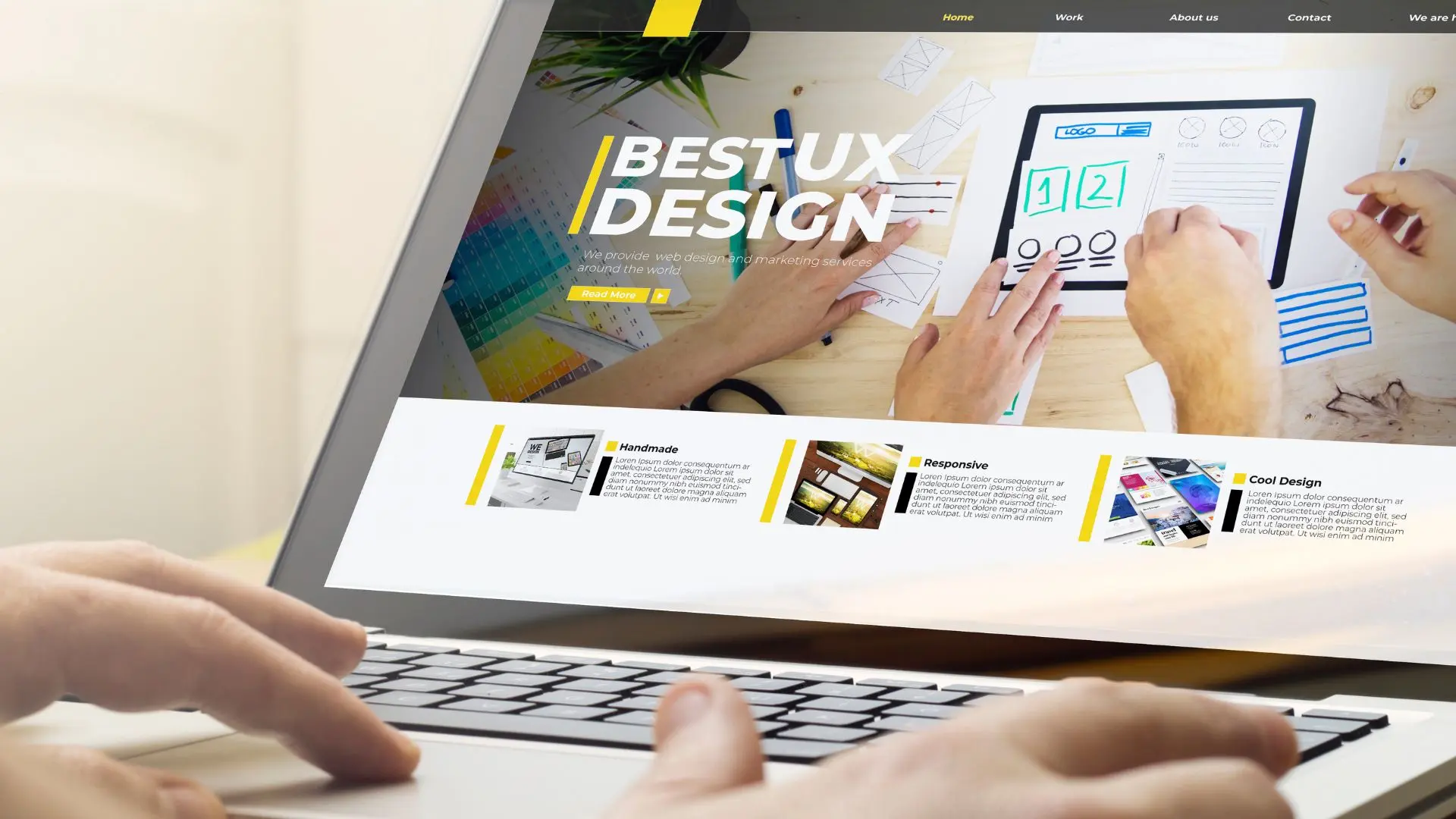Just like a physical storefront, your website is the digital face of your brand. In this blog post, we will explore how you can effectively build a strong brand identity through your website. By focusing on key elements such as design, messaging, and user experience, you can create a cohesive online presence that resonates with your target audience and sets you apart from the competition. Let’s dive in and discover how you can make your website a powerful tool for building and reinforcing your brand identity.
Defining Your Brand Identity

For a successful brand identity, you must first understand who your target audience is. Identifying your target audience involves researching and analyzing demographics, interests, preferences, and behaviors of potential customers. By knowing your audience, you can tailor your brand messaging, design, and overall website experience to resonate with them effectively.
Identifying Your Target Audience
To create a strong brand identity, you need to identify your target audience. By understanding who your ideal customers are, you can tailor your website content and design to meet their needs and preferences. Conduct market research, analyze data, and create customer personas to get a clear picture of who you are targeting.
Crafting Your Unique Value Proposition (UVP)
Your Unique Value Proposition (UVP) is a statement that defines what sets your brand apart from competitors and why customers should choose you. It should be clear, concise, and highlight the unique benefits or solutions your brand offers. Crafting a compelling UVP can help differentiate your brand in a crowded market and attract your target audience to your website.
It is imperative to communicate your UVP prominently on your website to grab visitors’ attention and quickly convey the value your brand provides. Your UVP should be visible on your homepage and reinforced throughout your website to create a strong brand identity and make a lasting impression on visitors.
Visual Elements of Brand Identity

Clearly, visual elements play a crucial role in shaping a brand’s identity. From the logo design to the color palette and typography, every visual aspect of a website should be carefully curated to reflect the brand’s values and personality.
Logo Design Principles
One of the key elements of brand identity is the logo. A well-designed logo should be simple, memorable, and versatile. It should embody the essence of the brand and be easily recognizable across different platforms and mediums.
Color Palette and Typography
An important aspect of brand identity is the color palette and typography. These elements help to establish the brand’s visual personality and create a cohesive look and feel across all brand touchpoints. The color palette should be chosen based on the brand’s values and target audience, while typography should be legible and align with the brand’s overall aesthetic.
Plus, consistency is key when it comes to using colors and fonts. By sticking to a defined color palette and set of fonts, you can create a strong visual identity that is instantly recognizable to your audience.
Imagery and Iconography
Logo imagery and iconography are also imperative components of brand identity. A brand’s imagery should be carefully selected to communicate its values and resonate with its target audience. Similarly, icons can be used to enhance the user experience and create a cohesive visual language throughout the website.
Logo imagery should be unique and relevant to the brand, helping to create a strong visual association with the brand’s values and offerings. Consistent use of imagery and iconography can help reinforce brand recognition and create a memorable user experience.
Tone and Voice in Brand Identity

Not only does your website design play a crucial role in establishing your brand identity, but the tone and voice used throughout your website are equally important. The way you communicate with your audience can significantly impact how your brand is perceived.
Developing Your Brand’s Personality
Developing a distinct brand personality involves determining the characteristics that define your brand and how you want to portray it to your target audience. Your brand’s personality should align with your overall brand identity and values. Consider what traits you want your brand to embody – whether it’s friendly, professional, playful, or sophisticated – and ensure that these traits are reflected in your website content, messaging, and overall tone.
Consistency in Language and Messaging
Personality should be consistent throughout all aspects of your website, including language and messaging. Consistency in language helps build trust and credibility with your audience, as it creates a cohesive brand experience. From your homepage to your product descriptions to your blog posts, ensure that the language and messaging are aligned with your brand’s personality and values.
By maintaining a consistent tone and voice across all communication channels, you can strengthen your brand identity and make a lasting impression on your audience.
Website Design for Brand Identity

Now, let’s investigate into the crucial aspect of website design when it comes to building a strong brand identity online. Your website is often the first point of contact between your brand and potential customers, so it’s imperative to make a lasting impression through thoughtful design choices.
Homepage Design Best Practices
On the homepage, it’s vital to convey your brand’s message clearly and concisely. Use high-quality visuals, such as images and videos, that reflect your brand’s values and ethos. Keep the design clean and uncluttered, ensuring that visitors can easily navigate the site and find the information they need.
Navigation and Information Architecture
Designing your website with intuitive navigation and a well-thought-out information architecture is key to a positive user experience. Make sure your website is easy to navigate, with clear menus and logical pathways to guide visitors through your content. A well-organized site not only enhances user engagement but also reinforces your brand’s credibility and professionalism.
Design plays a significant role in the user experience of a website. A streamlined navigation system with a clear hierarchy helps users find what they are looking for quickly and effortlessly, contributing to a positive overall perception of your brand.
Responsive Design for Mobile and Tablet
Nowadays, with the increasing use of mobile devices, it’s crucial to ensure your website is optimized for various screen sizes. A responsive design adapts your site’s layout to different devices, providing a seamless user experience across desktops, smartphones, and tablets. By implementing responsive design, you not only cater to a wider audience but also demonstrate your brand’s commitment to accessibility and user-centric design.
Content Strategy for Brand Identity
Creating Engaging Headlines and CTAs
To captivate your audience and convey your brand message effectively, it is crucial to craft engaging headlines and compelling call-to-actions (CTAs). Headlines should be attention-grabbing, concise, and relevant to the content they represent. CTAs should be clear, action-oriented, and aligned with your brand’s values and tone. By creating powerful headlines and CTAs, you can enhance brand recognition and drive user engagement on your website.
Developing a Content Calendar
The key to maintaining a consistent brand identity through your website is to develop a content calendar. This calendar should outline the topics, formats, and posting schedules for your content. By planning ahead, you can ensure that your content remains cohesive, on-brand, and aligned with your overall marketing strategy. A content calendar also helps in maximizing the impact of your content by strategically timing its release.
Another benefit of a content calendar is that it allows you to stay organized and track the performance of your content over time. By analyzing which types of content resonate most with your audience, you can refine your content strategy to better reflect your brand identity and meet the needs of your target market.
Repurposing Content for Social Media
Content repurposing is a cost-effective way to extend the reach of your brand identity on social media platforms. By repackaging existing content in different formats, such as turning blog posts into infographics or videos, you can engage with a broader audience and reinforce brand messaging across various channels. Repurposing content also allows you to tailor your message to fit the unique characteristics of each social media platform, further enhancing brand visibility and recognition.
Repurposing content for social media not only saves time and resources but also enables you to maintain a consistent brand voice and message across multiple touchpoints. By repurposing content strategically, you can amplify your brand identity and build a stronger connection with your audience on social media.
Consistency Across Platforms

Despite having a strong brand identity on your website, it’s necessary to maintain consistency across all platforms to ensure a cohesive brand image. Consistency builds trust and recognition with your audience, making it easier for them to remember and engage with your brand.
Social Media Branding and Integration
The key to successful branding on social media is to maintain a consistent look and feel that aligns with your website. This includes using the same color palette, fonts, and messaging to create a seamless experience for your audience. By integrating your website branding elements into your social media profiles, you can strengthen brand recognition and build a cohesive online presence.
Email Marketing and Newsletter Design
With email marketing, consistency is crucial for maintaining brand identity and fostering customer loyalty. Your newsletter design should reflect the same visual elements as your website, such as logo, colors, and typography. By aligning your email marketing efforts with your website branding, you can create a unified brand experience that resonates with your audience.
Email marketing is a powerful tool for building relationships with your audience and driving conversions. By incorporating your website branding into your email campaigns, you can reinforce brand recognition and establish a strong connection with your subscribers.
Offline Branding and Event Materials
With offline branding and event materials, such as business cards, brochures, and banners, it’s necessary to maintain consistency with your online brand identity. These materials should reflect the same visual elements as your website to ensure a unified brand experience across all touchpoints.
For instance, if your website uses a specific color scheme and logo, make sure to incorporate these elements into your offline materials to reinforce brand recognition. Consistency in offline branding helps to establish credibility and professionalism, making your brand more memorable to potential customers.
Building a Brand Identity through Your Website Conclusion
The importance of establishing a strong brand identity through your website cannot be overstated. Your website is often the first point of contact between your brand and potential customers, so it is crucial to make a great first impression. By incorporating elements such as consistent branding, unique design elements, and compelling content, you can create a website that effectively communicates your brand’s values and message.
The key to building a successful brand identity through your website lies in creating a cohesive and memorable experience for visitors. By ensuring that every aspect of your website reflects your brand’s unique personality and values, you can establish a strong connection with your target audience and differentiate yourself from competitors. Note, your website is more than just a digital storefront—it is a powerful tool for building brand awareness, driving engagement, and ultimately converting visitors into loyal customers.


